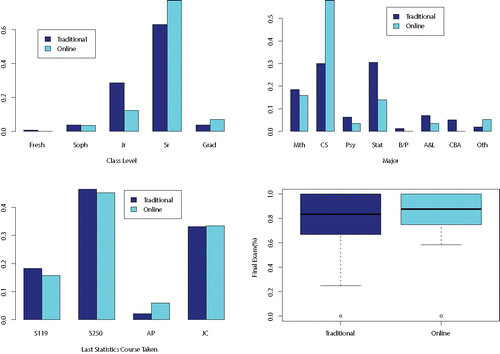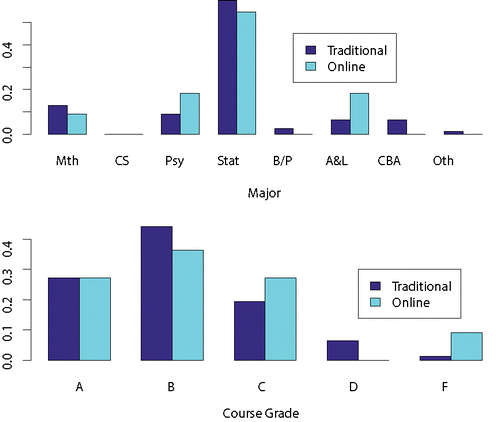Figures & data
Table 1. Study inputs from the SDSU student information database.
Figure 1. The bar charts present relative frequencies of class level, majors, and previous statistics course taken. The side-by-side boxplot presents final exam scores as a percentage. All graphs are stratified by enrollment in the online or traditional course. The major categories on the second bar chart of the top row are math, computer science (CS), psychology (Psy), statistics (Stat), biology/physics (B/P), arts & letters (A&L), business (CBA), and other. On the bar chart in the bottom row, JC denotes junior or community college.

Table 2. Variable importance ranking (in rank order) for random forest fit of final exam score on inputs for students in the online class (left) and for students in the traditional sections (right).
Table 3. Non-zero coefficients from lasso fit of final exam score on inputs for students in the online class (left) and for students in the traditional sections (right).
Table 4. Average individualized treatment effects for final exam score (percentage points) for students enrolled in the online class and in the standard face-to-face lecture classes.
Table 5. Inputs distinguishing students who benefited from the online offering (ITE Top 20%) in terms of final exam score.
Figure 2. Percentage of majors (top) and grades (bottom) for students from the Stat 350A online class (11 students) and traditional sections (77 students) completing the follow-up course Stat 350B. The bottom graphic displays course grade in Stat 350B.

